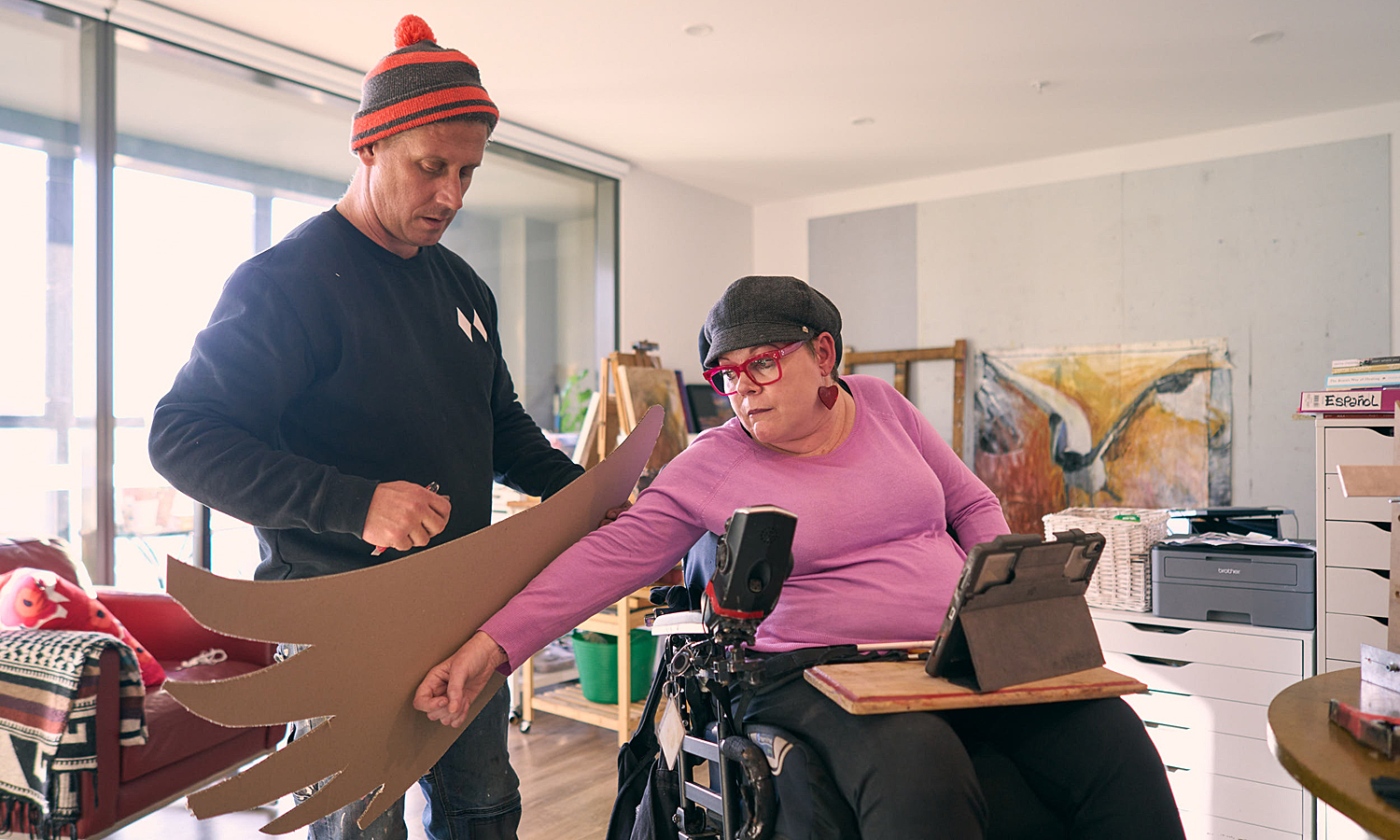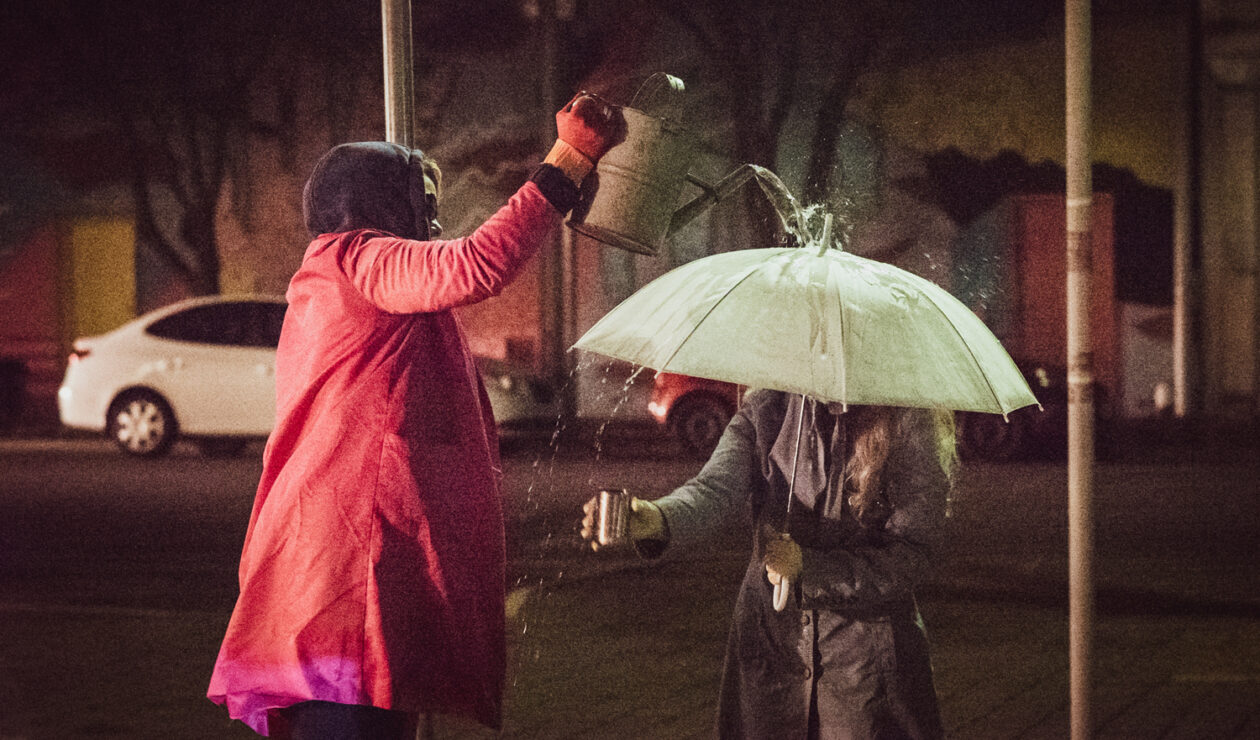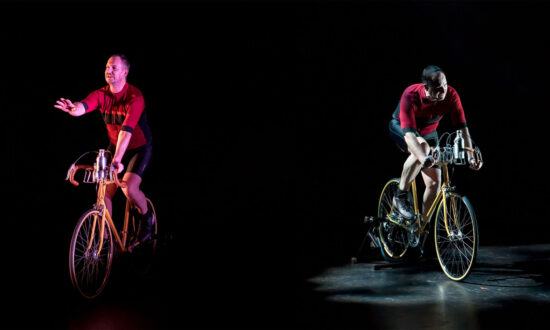This year’s Adhocracy applications had a very strong theme.
Many of those interested in the four-day hothouse – which offers space and an intensive time period for artists to rapidly develop work and then test it via three public showings – were preoccupied with a particularly 2023 phenomenon.
“We always find that there’s some things that become a very common theme, and we may or may not pick that up,” says Emma Webb, co-curator of Adhocracy and artistic director of Vitalstatistix – the organisation that holds the event.
“This year, there was a lot of proposals around AI. And interestingly, we didn’t pick up on that, because no one proposed a project that was dealing with this question in a way that any of us felt was enough, basically.”
But this decision by Adhocracy’s curators hasn’t banished the brave new technological frontier entirely from the program. The important contemporary conversation remains part of the event through the heavy presence of its thematic inverse.
“What we have done is we’ve actually gone in quite a different direction, and this year’s Adhocracy has a lot of stuff about human intimacy, the human autobiography – people controlling their own stories,” says Webb.

Participants in a community workshop that Roman Berry held for his 2023 Adhocracy work Not Very Berry. Photo: Keshi Sacdalan
Among the 13 projects that will be developed at Adhocracy – six of which involve South Australian artists – there are also interrogations of cultural histories, the relationship between class and creativity, and environmental collapse, among other themes.
Equally important as ideas for Webb and her co-curators Paul Gazzola, Cy Martin, and Fru Kenez are the methods of artistic practice represented at the event.
Adhocracy is unique in the Australian art calendar for several reasons, and its relationship with forms of practice is a chief point of difference. Not only is the event unusually unconcerned with outcomes – artists are encouraged to develop and explore rather than focus on producing a refined performance – it also fosters experimentation across disciplines.
There’s a warmth to the space that you’re in and it’s not overly formal
Artists are often chosen for Adhocracy because they are looking to move beyond the boundaries of their existing practice, rather than because of their track record in a certain form.
“[This year] we’ve got a project called Not Very Berry by Roman Berry,” says Webb. “It’s a kind of semi-autobiographical story of a Filipino-Australian gay man’s journey from the ’80s until now.
“Roman’s a very experienced community-based theatre-maker and creator and choreographer, but this is actually his first solo work, so that’s really exciting.
“I feel like that project is kind of a classic Adhocracy project, in a sense. You’ve got an artist who’s doing something a little bit new in their practice. You’ve got this social and cultural and political basis, but then it’s also full of the clear joy and experimentation.
“I think it’s going to be a lot of fun to watch how it develops.”
Berry will work with words, music and folk dance in his project. Other artists – like Kirsty Martinsen – have chosen less ephemeral forms for their experimentation. Martinsen’s Bodiness: Hands like wings will see her work with collaborators to create kinetic appendages that she will connect to her wheelchair for use in live performances.

Artist Kirsty Martinsen will present Bodiness: Hands like wings at the 2023 Adhocracy. Photo: Sam Roberts
Audiences are invited into the heart of every project’s development through public showings given by the artists on three out of the four days of the event.
While these showings sometimes take the form of rehearsed performances, they can also be artist talks, critical discussions of ideas, or improvisational.

Get InReview in your inbox – free each Saturday. Local arts and culture – covered.
Thanks for signing up to the InReview newsletter.
Webb says connecting artists with the wider community is as essential to Adhocracy as experimentation and multi-disciplinary practice.
“It’s a kind of ideas-based and convivial environment where it’s not scary for people to sit down and have a conversation with an artist,” she says.
“There’s a warmth to the space that you’re in and it’s not overly formal. I think the process of Adhocracy creates a really good environment for artists that want to do social practice.”
It’s a handful of days that offers plentiful opportunity for artists to push the boundaries of new ideas and new ways of creating, but it is equally an opportunity for audiences – a rare chance to step inside the creative process.
Adhocracy takes place from September 1-4 at the Waterside Worker’s Hall and Hart’s Mill in Port Adelaide.
Support local arts journalism
Your support will help us continue the important work of InReview in publishing free professional journalism that celebrates, interrogates and amplifies arts and culture in South Australia.
Donate Here




